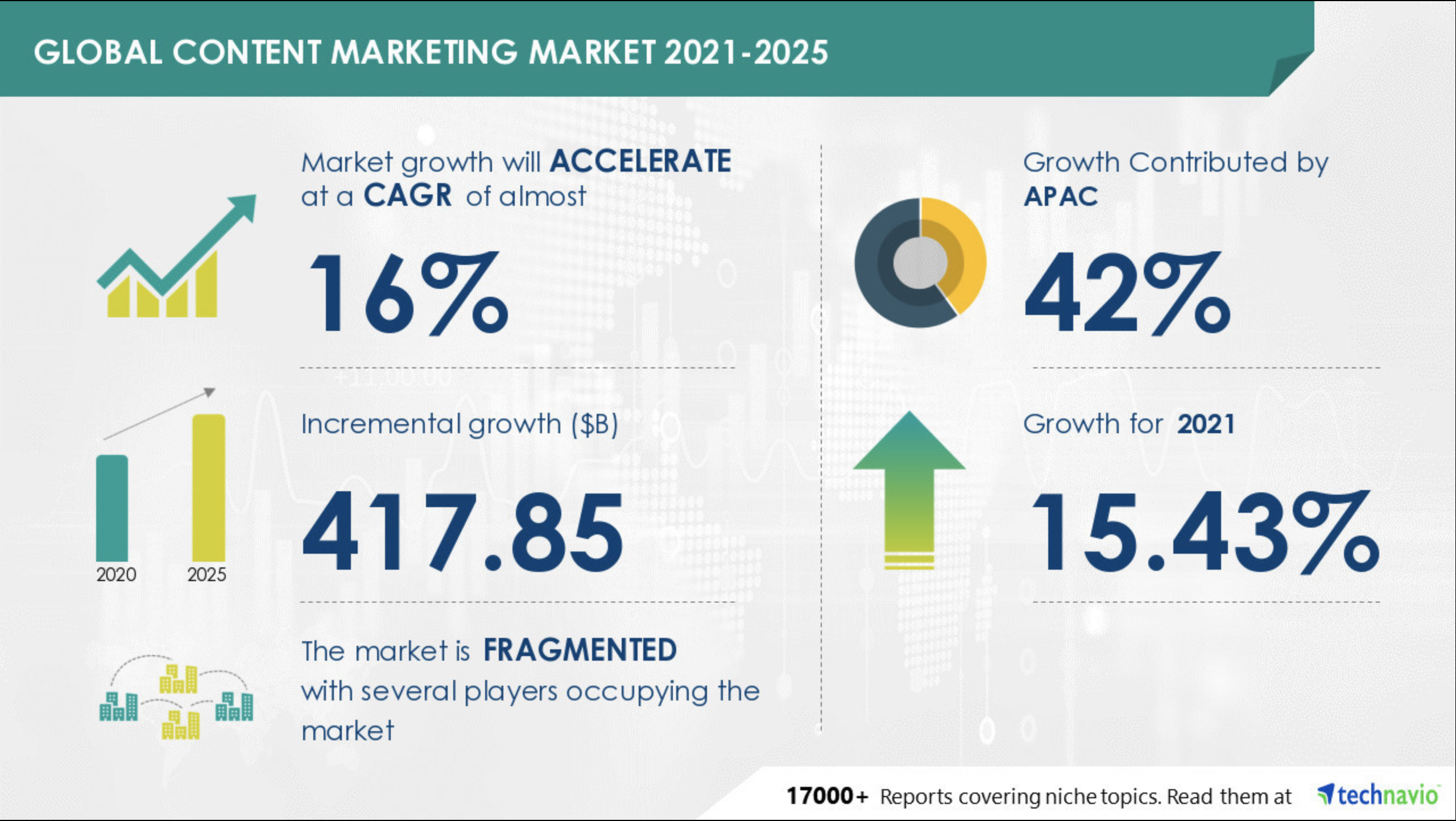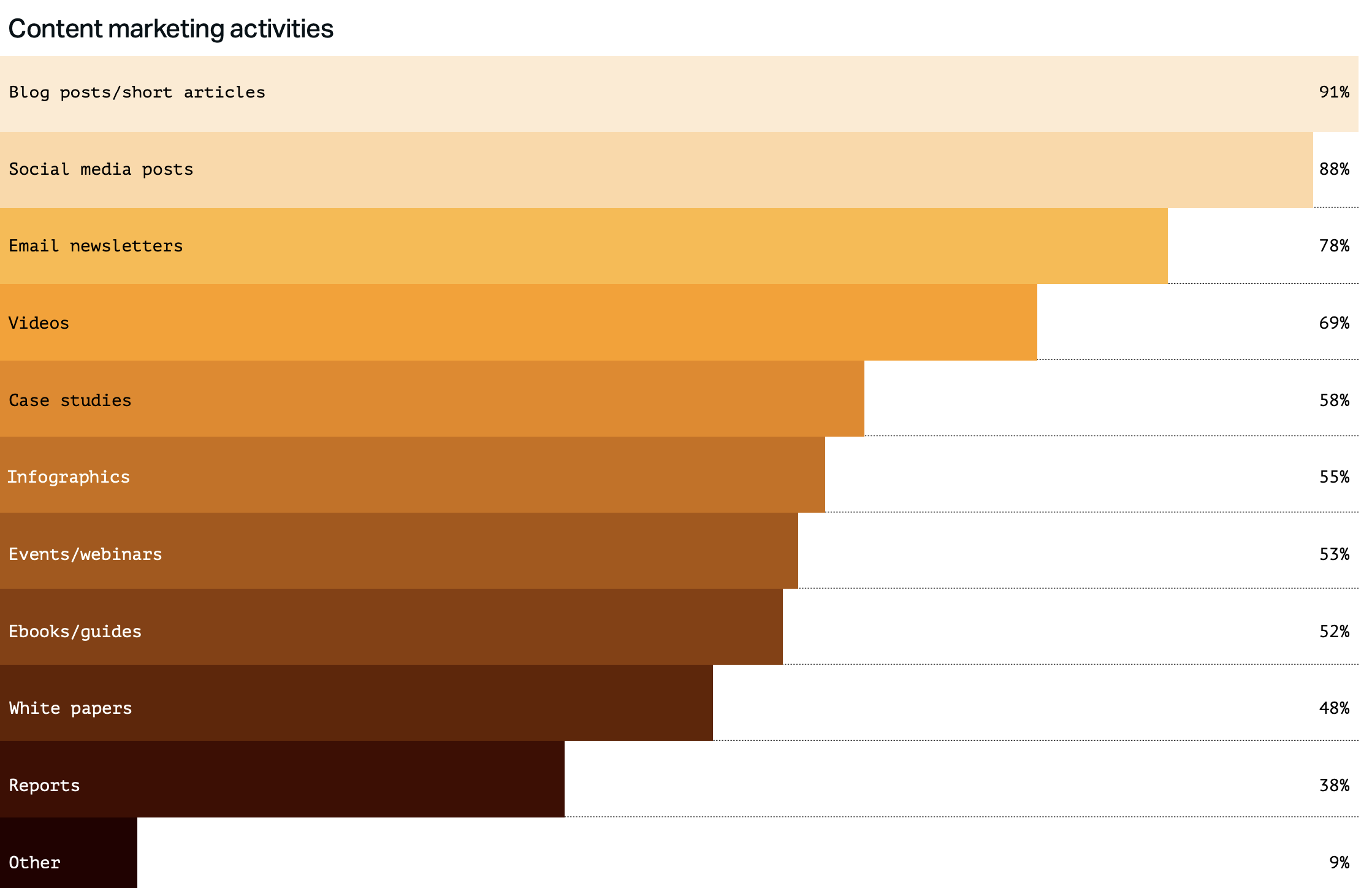ROI
Monetizing Your Content Strategy: Insights for B2B and B2C Brands
Content marketing is one of the most powerful tools in a modern marketer’s arsenal. If used strategically, it can significantly increase an organization’s return on investment (ROI).
Though marketers may have a general sense that content contributes to their company’s bottom line, a staggering 49% don’t understand how their content is performing, according to a recent Parse.ly report.
But when budgets tighten across B2B and B2C organizations, there’s greater pressure to prove content marketing value relative to revenue contribution.
To maximize the effectiveness of their content marketing strategy and ensure a healthy ROI, organizations can benefit from analyzing the latest content marketing ROI statistics and applying best practices for leveraging them.
Eye-Opening Content Marketing ROI Statistics
If you don’t yet have the data behind your own organization’s ROI calculations, these stats can help you make a compelling argument to stakeholders that content marketing is worth the investment:
- Content marketing can generate 3x the leads as traditional marketing yet cost 62 percent less.
- Email marketing sees an average return of $36 for every dollar spent.
- Between 2021 and 2025, the content marketing market is expected to grow by $417.85 billion.
- Seventy-one percent of B2B buyers read blog content prior to making a purchase decision.
- Thought leadership content led to purchase decisions for 48 percent of decision-makers in a global study.
How to Determine Content Value
Based on those statistics, you could argue that most content marketing delivers value to someone in some way. But if you’re trying to put a dollar value on content, there are two formulas you can use to calculate ROI.
The key is first having a content attribution model and lead scoring program in place, plus ways to capture accurate data for several important content metrics.
For a quick refresher: Content attribution is the practice of assigning a sales revenue percentage to content that influenced the sale during the buying process. Lead scoring can help sales and marketing teams determine which leads are most likely to become customers. They do this by assigning a weighted value to actions prospects take, like viewing a sales page or downloading a white paper.
To calculate content ROI as it relates to sales and opportunities, use this formula:
- Average Cost per Opportunity x Average Opportunities Tied to Content = Content ROI
To express ROI as a percentage, use this calculation:
- ROI (%) = ( Return – Investment / Investment) x 100
When determining the total investment cost for a content piece or campaign, don’t forget to include the following:
- Promotional fees like paid placements
- Freelance writing and design fees
- General cost of internal resources tied to the content project
Including these costs ensures your ROI calculations are accurate while also providing insights into areas you may want to streamline in the future.
Common KPIs That B2B and B2C Brands Track
Clicks, visits, and downloads… oh my! With so many potential key performance indicators (KPIs) to evaluate, marketers sometimes struggle with where to start.
Consider the Content Measurement Maturity Model to evaluate where your organization stands and the steps you can take to tie content marketing efforts to revenue. The model is an easy-to-follow framework content marketers can use to improve their organization’s content measurement.
B2B and B2C brands may have different KPIs, but some common ones include traffic, conversion rate, engagement, and revenue. Tracking these KPIs will help you understand the effectiveness of your content strategy and identify areas for improvement.
How to Identify the Ideal Channels for Monetizing Your Content Strategy
Once you have identified your organization’s maturity model stage and the KPIs you plan to track, the next step is to determine the ideal channels for monetizing your content strategy.
These four points can help you focus on the right channels:
- Identify your target audience: If you don’t already have buyer personas developed, you should conduct research to understand who your target audience is and where they are most active online. Are they more likely to spend time on social media platforms like Facebook or LinkedIn? Do they prefer to read blogs or watch videos? Understanding your audience’s preferences will help you identify which channels are most likely to resonate with them.
- Analyze your existing channels: Take a look at the marketing channels you’re currently using and analyze their performance. Which channels are generating the most engagement and conversions? Which channels have the highest ROI? This information will help you determine which channels to double down on and which to cut back on.
When it comes to owned channels, blog posts, social media posts, and email newsletters represent the largest volume of content activities.
- Experiment with new channels: Don’t be afraid to experiment with new marketing channels to see what works best for your business. Try out new social media platforms or content formats to see if they resonate with your audience. Keep track of each channel’s performance and adjust your strategy accordingly.
- Monitor industry trends: Stay up-to-date with industry trends and emerging marketing channels. For example, user-generated content and live streaming have exploded in popularity in recent years. Keeping an eye on these trends can help you identify new opportunities to monetize your content marketing strategy.
B2B Content Marketing Strategies
The process for B2B buyers is usually longer than B2C and can include more touchpoints. That presents an excellent opportunity to deliver engaging experiences that lead to higher conversions.
Channels that B2B organizations have seen a healthy return according to content marketing ROI statistics include:
- White papers and case studies: Providing in-depth industry insights, survey reports, and case studies can position your brand as a thought leader and generate leads.
- Thought leadership webinars: Hosting webinars allows you to engage with your audience in real time and showcase your expertise. Try not to focus on self-promotion but on valuable and actionable insights that can benefit your potential buyers.
- Email newsletters: Email marketing is an effective, low-cost way to nurture leads and drive sales through list segmentation and targeted campaigns.
It’s important not to place all of your ROI expectations on a single tactic. One deal Contently analyzed included seven content pieces that influenced the sale and resulted in a 15.5x content ROI.
B2C Content Marketing Strategies
B2C companies can use content marketing to boost sales and drive conversions through a variety of mediums. Social media platforms like Instagram, TikTok, and YouTube are excellent for engaging with customers on a direct level and providing them with shareable content:
- Social media marketing: Social media platforms offer a range of monetization options, such as sponsored posts, reels, and influencer marketing.
- Visual content: B2C audiences are often more visually driven, so investing in high-quality visual content, such as videos and graphics, can help drive engagement and sales.
- User-generated content (UGC): Allowing customers to create and share their own content related to your product or service can help build brand loyalty, drive conversions, and increase revenue. Leveraging the power of influencers is another way to get high-quality UGC that larger audiences will see.
For consumers, user-generated content falls in the same category as word-of-mouth, which makes it a valuable option that brands haven’t fully tapped. One survey found that 79% of customers said that UGC influences their purchase decision.
One of the most successful UGC campaigns was the Ice Bucket Challenge, which helped raise $115 million for the ALS Association. Not only did it take off among social media users, but top celebrities like Taylor Swift and Steven Spielberg joined in on the viral challenge.
Measuring and Optimizing Your Content Strategy ROI
To ensure that your content monetization strategy is effective, you need to measure results to optimize your ROI. To do this, you should regularly analyze your KPIs and adjust your strategy accordingly.
- Test different monetization channels: Experiment with different monetization channels to determine which ones generate the most revenue. For example, you can test social media advertising versus email marketing to see which channel is more effective in driving sales.
- A/B test: A/B testing can help you determine which content types and formats are most effective in driving conversions. In other words, you can test long-form blog posts versus short-form blog posts to see which one generates more leads.
- Personalize: Personalizing your content and marketing campaigns can help increase engagement and drive conversions. For instance, you can use customer data to personalize your email campaigns and tailor your content to meet the specific needs of your target audience.
Monetizing your content marketing strategy is essential to generating a positive ROI. By tracking common KPIs, identifying the ideal channels for monetization, and measuring and optimizing your content marketing ROI statistics, you can ensure that your content marketing efforts drive tangible results for your business.
Whether you’re a B2B or B2C brand, understanding content marketing monetization and implementing the best practices will help you stay ahead of the competition and succeed in today’s digital landscape.
Stay on top of your content marketing game. Subscribe to The Content Strategist to get the latest news in content marketing strategy, digital transformation, and emerging tech trends.
Image by RawpixelGet better at your job right now.
Read our monthly newsletter to master content marketing. It’s made for marketers, creators, and everyone in between.








